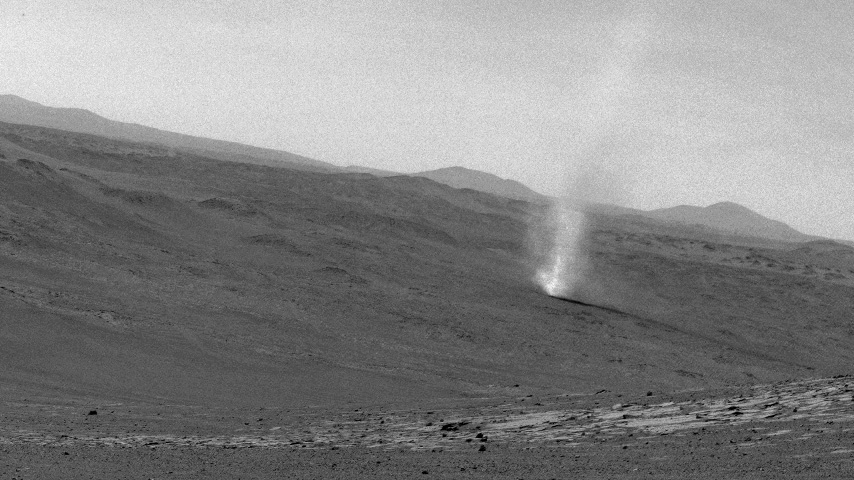On March 14, NASA will join people across the U.S. as they celebrate an icon of nerd culture: the number pi. So well known and beloved is pi, also written π or 3.14, that it has a national holiday named in its honor. And it’s not just for mathematicians and rocket scientists. National Pi Day is widely celebrated among students, teachers, and science fans, too. Read on to find out what makes pi so special, how it’s used to explore space, and how you can join the celebration with resources from NASA.
1. Remind me, what is pi?
Pi, also written π, is the Swiss Army knife of numbers. No matter how big or small a circle – from the size of our universe all the way down to an atom or smaller – the ratio of a circle’s circumference (the distance around it) to its diameter (the distance across it) is always equal to pi. Most commonly, pi is used to answer questions about anything circular or spherical, so it comes in handy especially when you’re dealing with space exploration.
2. How much pi do you need?
For simplicity, pi is often rounded to 3.14, but its digits go on forever and don’t appear to have any repeating patterns. While people have made it a challenge to memorize record-breaking digits of pi or create computer programs to calculate them, you really don’t need that many digits for most calculations – even at NASA. Here’s a JPL engineer on how many decimals of pi you need.
3. Officially official.
Pi pops up in everything from rocket-science-level math to the stuff you learn in elementary school, so it’s gained a sort of cult following. On March 14 (or 3/14 in U.S. date format) in 1988, a physicist at the San Francisco Exploratorium held what is thought to be the first official Pi Day celebration, which smartly included the consumption of fruit pies. Math teachers quickly realized the potential benefits of teaching students about pi while they ate pie, and it all caught on so much that in 2009, the U.S. Congress officially declared March 14 National Pi Day. Here’s how to turn your celebration into a teachable moment.
4. Pi helps us explore space!
Space is full of circular and spherical features, and to explore them, engineers at NASA build spacecraft that make elliptical orbits and guzzle fuel from cylindrical fuel tanks, and measure distances on circular wheels. Beyond measurements and space travel, pi is used to find out what planets are made of and how deep alien oceans are, and to study newly discovered worlds. In other words, pi goes a long way at NASA.
5. Not just for rocket scientists.
No Pi Day is complete without a little problem-solving. Even the math-averse will find something to love about this illustrated math challenge from NASA that features real questions scientists and engineers must answer to explore and study space – like how to determine the size of a distant planet you can’t actually see. Four new problems are added to the challenge each year and answers are released soon after Pi Day.
6. Teachers rejoice.
For teachers, the question is not whether to celebrate Pi Day, but how to celebrate it. (And how much pie is too much? Answer: The limit does not exist.) Luckily, the NASA-JPL Education Office has an online catalog for teachers with all of its “Pi in the Sky” math challenge questions for grades 4-12. Each lesson includes a description of the real-world science and engineering behind the problem, an illustrated handout and answer key, and a list of applicable Common Core Math and Next Generation Science Standards.
7. How does NASA celebrate?
In a way, we celebrate Pi Day every day by using pi to explore space. But in our free time, we’ve been known to make and eat space-themed pies, too! Share your own nerdy celebrations with us here.
8. A pop-culture icon.
The fascination with pi, as well its popularity and accessibility have made it a go-to math reference in books, movies, and television. Ellie, the protagonist in Carl Sagan’s book “Contact,” finds a hidden message from aliens in the digits of pi. In the original “Star Trek” series, Spock commanded an alien entity that had taken over the computer to compute pi to the last digit – an impossible task given that the digits of pi are infinite. And writers of “The Simpsons,” a show that's known for referencing math, created an episode in which Apu claims to know pi to 40,000 digits and proves it by stating that the 40,000th digit is 1.
9. A numbers game.
Calculating record digits of pi has been a pastime of mathematicians for millennia. Until the 1900s, these calculations were done by hand and reached records in the 500s. Once computers came onto the scene, that number jumped into the thousands, millions, and now trillions. In 2019, Google developer Emma Haruka Iwao broke the record held by scientist and pi enthusiast Peter Trueb by calculating pi to 31 trillion digits – 31,415,926,535,897 digits to be exact.
The record for the other favorite pastime of pi enthusiasts, memorizing digits of pi, stands at 70,030.
10. Time to throw in the tau?
As passionate as people are about pi, there are some who believe things would be a whole lot better if we replaced pi with a number called tau, which is equal to 2π or 6.28. Because many formulas call for 2π, tau-enthusiasts say tau would provide a more elegant and efficient way to express those formulas. Every year on Pi Day, a small debate ensues. While we won’t take sides, we will say that pi is more widely used at NASA because it has applications far beyond geometry, where 2π is found most often. Perhaps most important, though, for pi- and pie-lovers alike is there’s no delicious homophone for tau.













































